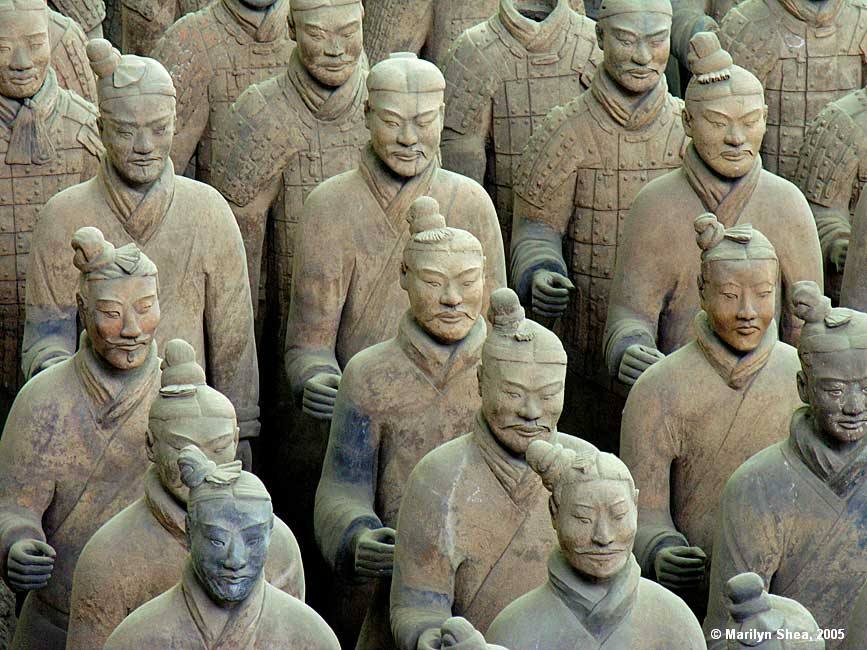 |
| Notice the variation in hairstyles as well as the different shapes of the heads. These differences indicate that the heads were not simply modified to give the impression of individuality, but were created as entire models of a head. The hair was worn twisted around the base of a "ponytail" and wrapped in a scarf by this group. Each warrior tied their hair at a different angle and the ends of the scarves point in all directions.
On the basis of the hairstyles, Chen Jingyuan (People's Daily, August 12, 2009), proposed that this site was not actually devoted to and built by the first Qin emperor, but was built by a previous empress. King Huiwen of Qin (reigned 337 BC - 311 BC) had many wives, but one rose to be the favorite. After his death she ruled as Empress Dowager Xuan for 41 years. She had come from the State of Chu where the men wore their hair as shown on many of the warriors in the tomb. Chen Jingyuan points out several other reasons for his theory, including the distance of the warriors from the respective tombs, certain inscriptions, and the amount of silt that accumulated in the warrior chambers before they were covered. It is important that alternative views are proposed to spur the search and question the interpretations of evidence. Although the preponderance of evidence aupports the generally accepted conclusion that the Warriors and Horses site was built by the first Qin emperor, Shi Huangdi 秦始皇陵 (Qín Shǐhuáng di), raising questions about facts that don't fit, or can be interpreted in several ways is just good science. |
http://hua.umf.maine.edu/China/xian2.html
Last
update: March 2010
© Marilyn Shea, 2010